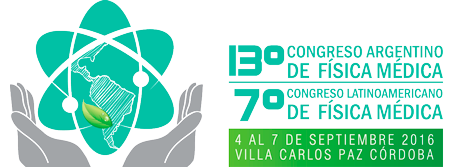- September 4, 2016
- Category: Nuclear Medicine, Scientific Publications

3D Dosimetry for Selective Internal Radiation Therapy of unresectable liver cancers using Yttrium-90 loaded Microspheres: Case Report
Marilyne Kafrouni1,2, Carole Allimant1, Marjolaine Fourcade1, Sébastien Vauclin2, Alina-Diana Ilonca1, Fayçal Ben Bouallègue1, Boris Guiu1 and Denis Mariano-Goulart1
1 CHRU of Montpellier, 371, avenue du doyen Gaston Giraud, 34295 Montpellier cedex 5, France
2 DOSIsoft SA, 45/47, avenue Carnot, 94230 Cachan, France
13 Congreso Argentino de Física Médica, 7 Congreso Latinoamericano de Física Médica.
Villa Carlos Paz, Cordoba, Argentina, Septiembre 4 – 7, 2016
ABSTRACT
Today, in selective internal radiation therapy (SIRT), activity to inject is planned by standardized approaches that can be easily applied in everyday clinical workflow. However, interest for advanced dosimetry tools is growing since dose-effect relationship has been highlighted in the literature by different studies. This work aims at describing the implementation and potential of 3D voxel-based personalized dosimetry compared to standard approach. This is done through the report of a 68-year-old male patient with liver metastasis from colorectal carcinoma. A whole liver radioembolization using resin microspheres (SIR-Spheres®, SIRTeX, North Sydney, Australia) was performed with a narrow dose constraint of 30 Gy to non-tumoral liver (NTL) to preserve enough hepatic integrity. On one hand, the MIRD-based partition model, considered as standard approach, was applied on the uptake volume defined using Syngo®.via software solution (Siemens, Erlangen, Germany). On the other hand, both predictive and in vivo control dosimetries were carried out using a SIRT treatment planning system (TPS) (PLANET® Dose, DOSIsoft, Cachan, France) on anatomical and functional volumes. The standard and TPS calculations estimated an average planned dose to NTL close to 30 Gy. Planned doses to the tumoral liver calculated by the partition model applied at the organ level and by the 3D TPS calculation at voxel level were 118 and 71 Gy respectively. Differences between both methods were partly related to the volume definition. Additional information provided by the TPS allowed to slightly adjust the activity to be injected delivering sufficient dose to tumoral liver while saving NTL as much as possible. In vivo dosimetry was performed on 90Y quantified PET images with the SIRT TPS and allowed to know the dose delivered to each region. This had an interest for the patient follow-up analysis and to consider later another possible treatment. SIRT TPS seemed to be a clinical decision-making tool thanks to the possible risk/benefit balance optimization. The study will be carried out with further patients to open the way to more personalized SIRT dosimetry.
